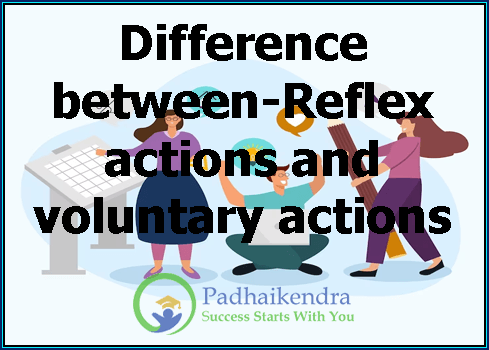Reflex actions and voluntary actions are two types of movements or responses produced by the nervous system in response to different stimuli.
Reflex actions are rapid and automatic responses to a specific stimulus without conscious control. They are mediated by the reflex arc, which is a neural pathway that allows sensory information to be quickly processed and responded to without conscious awareness. Reflex actions are typically protective and involve the activation of muscles to remove the body from harm’s way, such as the withdrawal of a hand from a hot object or the blinking of an eye in response to a sudden light.
Voluntary actions, on the other hand, are purposeful and conscious movements that are under the control of the individual. They are initiated in the cerebral cortex of the brain and involve the planning and execution of movements that serve a specific purpose, such as reaching for a cup of coffee or walking to the store. Voluntary actions require a higher level of processing and involve the coordination of multiple muscle groups, and are subject to feedback and correction based on the desired outcome.
In summary, reflex actions are rapid and automatic responses to a specific stimulus without conscious control, while voluntary actions are purposeful and conscious movements that are under the control of the individual and involve the coordination of multiple muscle groups.





